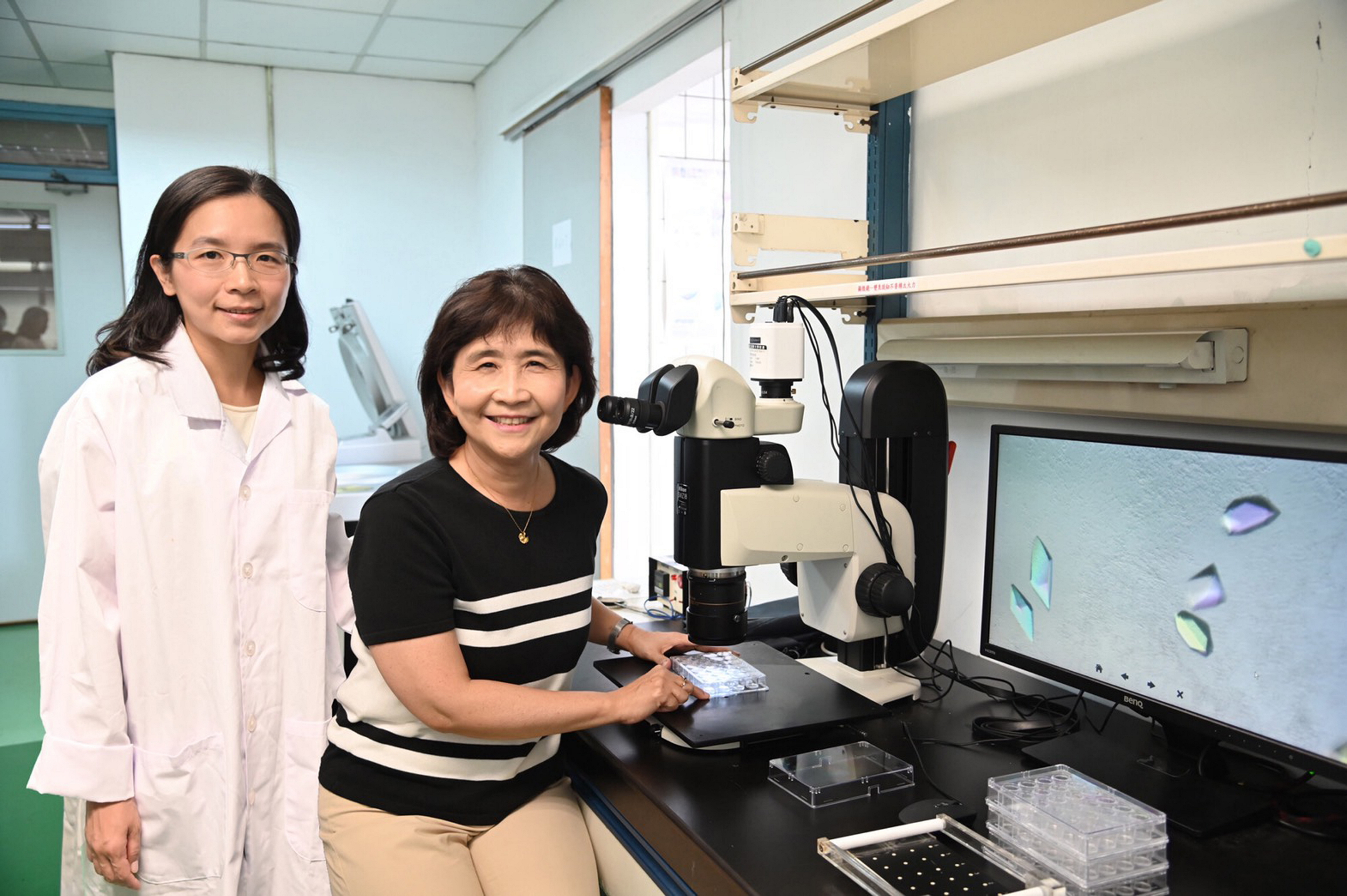
Professor Sun Yuh-Ju of the Institute of Bioinformatics and Structural Biology showing team member Tsai Jia-Yin how to grow a crystal. Photo courtesy of Business Wire)
KUALA LUMPUR, Oct 7 (NNN-BERNAMA) — A research team led by Professor Sun Yuh-Ju of the Institute of Bioinformatics and Structural Biology recently solved the mystery which has long surrounded the molecular structure of the ‘phosphate transporter’.
According to NTHU in a statement, the findings are expected to have a significant impact on research into dementia treatment.
Human phosphate transporter (hPiT) is an important membrane protein for transporting phosphate and sodium ions into brain cells.
According to Sun, membrane proteins, such as receptors, transporters and channels are responsible for transmitting signals and supplying energy to cells, and therefore play a vital role in the pharmaceuticals development.
But pathological changes can block this transport, allowing calcium phosphate to precipitate on the surface of the cell membrane, which will eventually lead to calcification of the basal nucleus, thereby producing the neurodegenerative symptoms typical of Parkinson and Alzheimer diseases.
Sun said analysing the hPiT and locating the site of the patients’ variants were important in finding treatment for brain calcification.
After the research team analysed the three-dimensional structure of the hPiT, Chwan-Deng Hsiao, a biophysics specialist, used an artificial cell membrane to determine whether a mutation at the target location would prevent the membrane protein from transporting phosphate.
The first step in analysing the molecular structure of membrane protein is to cultivate the membrane protein crystal and Tsai Jia-Yin, a postdoctoral researcher at NTHU’s Institute of Bioinformatics and Structural Biology is a team member in charge.
— NNN-BERNAMA






